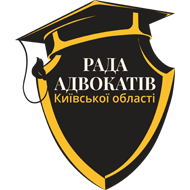In the era of high turbulence — armed conflicts, emotional burnout, and increasing workload on professionals — conflicts have become a common element of the professional environment. Instead of destruction, they can serve as a tool for development — provided they are managed properly.
National Association of Lawyers of Ukraine held a webinar on June 6 titled “Good Conflict: How to Conflict Properly“. The event, organized with the support of the International Bar Association (IBA), was part of a large-scale project to support the mental health of Ukrainian lawyers during wartime.
 A psychologist and gestalt therapist Viktoriya Kravets helped lawyers find internal resources in times of stress and professional burnout.
A psychologist and gestalt therapist Viktoriya Kravets helped lawyers find internal resources in times of stress and professional burnout.
“Conflict from a psychotherapeutic point of view is a collision of opposing interests, values, or desires that does not necessarily have a destructive nature,” she noted. “A ‘good’ conflict is a process that allows participants to maintain contact, better understand themselves and others, and ultimately reach a constructive solution.” According to the speaker, such an approach is particularly important for lawyers who are daily exposed to conflict-prone environments — both in court and in interpersonal relationships.
The psychologist emphasized the key markers of a ‘healthy’ conflict: maintaining dialogue between parties, a sincere desire to listen to each other, focusing on the problem rather than the individual, being willing to pause in emotionally charged moments, and clarity of intentions. “After a good conflict, there is no residue — there is relief, understanding, and readiness for change,” Kravets pointed out.
Participants of the webinar discussed the fear of conflicts, often associated with negative past experiences, internal prohibitions on showing aggression, or fear of damaging relationships. However, avoiding conflicts usually leads to accumulating hidden tension and deepening problems.
The webinar covered the most common conflict behavior strategies: avoidance, compromise, competition, accommodation, cooperation, and mediation. The speaker elaborated on the strengths and weaknesses of each approach, urging participants not to avoid conflicts but to learn to choose an effective tactic depending on the situation.
A separate section focused on practical tools for ecological conflict resolution using the nonviolent communication (NVC) methodology, including:
- Observation: stating facts without emotional judgments (“When I see/hear…”);
- Feelings: talking about one’s emotions rather than blaming (“I feel…”);
- Needs: recognizing one’s needs behind the emotion (“…because it’s important to me…”);
- Requests: formulating clear and realistic requests (“Could you…?”).
At the end, participants discussed how these insights can be applied in a lawyer’s daily work — including communication with clients, colleagues, opponents in court proceedings, and within a team. Conflict, with the right approach, can be not only a test but also a resource for growth.
NAU continues a series of events aimed at strengthening the emotional resilience of lawyers, developing self-regulation skills, and adapting to professional challenges during wartime. All interested lawyers can join upcoming webinars, workshops, and programs of psychoemotional support within the joint project with IBA.



